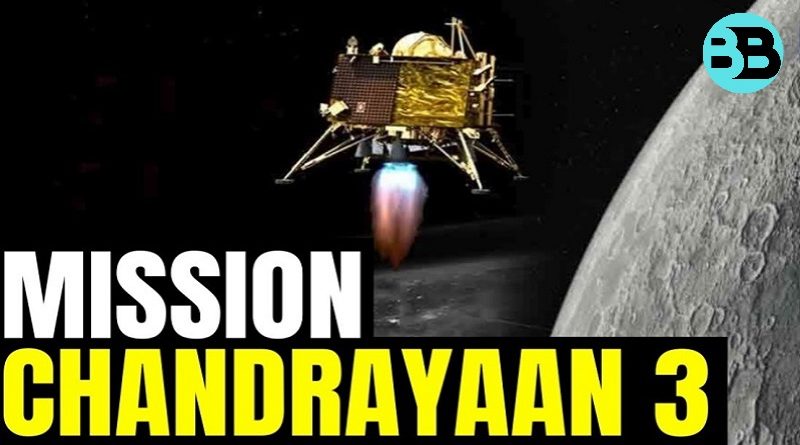Chandrayaan-3: India’s Ambitious Lunar Mission
Chandrayaan-3 represents India’s unwavering commitment to lunar exploration and its growing prowess in space science and technology. The mission’s objectives to study the Moon’s geology, investigate water ice deposits, and examine the lunar exosphere will contribute valuable data to our understanding of the Moon’s origin and evolution. By building upon the experiences and lessons learned from Chandrayaan-1 and Chandrayaan-2, ISRO is well-prepared to overcome challenges and increase the chances of mission success.
As Chandrayaan-3 embarks on its journey, it symbolizes India’s ambition to explore the unknown, push the boundaries of scientific knowledge, and inspire generations to reach for the stars. The mission serves as a testament to India’s determination to establish itself as a significant player in the global space community, while fostering international collaboration and scientific cooperation. With Chandrayaan-3, India takes another giant leap in its pursuit of unraveling the mysteries of the Moon and beyond.
Introduction
Chandrayaan-3, the third lunar exploration mission by the Indian Space Research Organisation (ISRO), represents India’s unwavering commitment to advancing its space program and scientific endeavors. Building upon the successes and lessons learned from Chandrayaan-1 and Chandrayaan-2, this ambitious mission aims to further expand our understanding of the Moon’s geology, mineralogy, and its evolution. Chandrayaan-3, like its predecessors, showcases India’s growing capabilities in space exploration and reaffirms its status as a significant player in the global space arena.
Mission Objectives and Scientific Significance
Chandrayaan-3 has a multifaceted set of objectives, primarily focused on enhancing our understanding of the Moon and its geological processes. The mission aims to study the lunar surface, characterize its composition, investigate the presence of water ice, and analyze the Moon’s exosphere. By examining the Moon’s south polar region, which is believed to harbor vast reserves of water ice, Chandrayaan-3 seeks to contribute crucial data to future lunar resource utilization efforts.
The scientific payload of Chandrayaan-3 includes advanced instruments such as the Terrain Mapping Camera (TMC) for high-resolution mapping of the lunar surface, the Chandrayaan-3 Large Area Soft X-ray Spectrometer (CLASS) for elemental analysis, and the Dual Wavelength Lander Seismometer (DWLS) to study lunar seismic activity. These instruments will provide valuable insights into the Moon’s structure, its thermal properties, and the nature of its regolith.
Technical Overview and Mission Architecture
Chandrayaan-3 follows a similar mission architecture to its predecessor, Chandrayaan-2, with some key modifications. The mission comprises an orbiter, lander, and rover, working together in synergy to accomplish the mission’s scientific objectives. The orbiter will serve as the communication link between the lander and Earth, facilitating data transmission and relay services.
The lander, equipped with scientific instruments, will carry out a soft landing on the lunar surface in the targeted region near the Moon’s south pole. It will house the rover, which will traverse the lunar terrain, conduct in-situ experiments, and gather crucial data about the Moon’s geological properties. The rover’s mobility will enable it to explore areas of scientific interest, providing valuable insights into the Moon’s evolution and the presence of water ice.
The launch vehicle chosen for Chandrayaan-3 is the GSLV Mk III, India’s most powerful launcher, capable of delivering the mission to the Moon’s orbit. The launch window is carefully selected to optimize the trajectory and minimize fuel consumption, ensuring a successful lunar transfer.
Challenges and Lessons Learned from Chandrayaan-2
Chandrayaan-2, although not achieving a soft landing on the lunar surface as intended, was a significant milestone for India’s space program. The mission demonstrated India’s capabilities in launching a lunar mission, orbiting the Moon, and attempting a soft landing. It also showcased the strength of ISRO’s scientific community and its ability to adapt and learn from setbacks.
The challenges faced during Chandrayaan-2 have been thoroughly analyzed, leading to improvements in the design, engineering, and operational aspects of Chandrayaan-3. The critical issues identified, such as the communication loss during the descent phase, have been addressed to ensure better mission success probabilities. Through extensive simulations and rigorous testing, ISRO aims to mitigate potential risks and enhance the reliability of the lander and rover systems.
International Collaborations and Future Perspectives
ISRO recognizes the importance of international collaboration in advancing space exploration and promoting scientific cooperation. Chandrayaan-3 is expected to foster collaborative efforts with other space agencies, providing opportunities for knowledge sharing, technological exchange, and joint research endeavors. By leveraging the strengths of different nations, space exploration can become a truly global endeavor, with each mission contributing to our collective understanding of the universe.
Looking ahead, Chandrayaan-3 also paves the way for India’s future space exploration plans. It sets the stage for more ambitious missions, such as crewed lunar landings, sample return missions, and even the establishment of a lunar base. India’s space program aims to contribute not only to scientific knowledge but also to technological advancements, national development, and inspiring the next generation of scientists and engineers.




